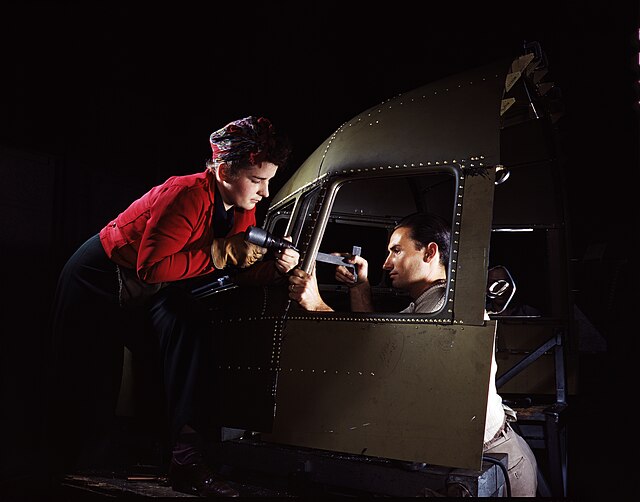The Life and Times of Rosie the Riveter
The Life and Times of Rosie the Riveter is a 1980 documentary film and the first movie made by Connie Field about the American women who went to work during World War II to do "men's jobs." In 1996, it was selected for preservation in the United States National Film Registry by the Library of Congress as being "culturally, historically, or aesthetically significant."
The Life and Times of Rosie the Riveter
Rosie the Riveter is an allegorical cultural icon in the United States who represents the women who worked in factories and shipyards during World War II, many of whom produced munitions and war supplies. These women sometimes took entirely new jobs replacing the male workers who joined the military. She is widely recognized in the "We Can Do It!" poster as a symbol of American feminism and women's economic advantage. Similar images of women war workers appeared in other countries such as Britain and Australia. The idea of Rosie the Riveter originated in a song written in 1942 by Redd Evans and John Jacob Loeb. Images of women workers were widespread in the media in formats such as government posters, and commercial advertising was heavily used by the government to encourage women to volunteer for wartime service in factories. Rosie the Riveter became the subject and title of a Hollywood film in 1944.
A "Rosie" putting rivets on an Vultee A-31 Vengeance in Nashville, Tennessee, in 1943
Women workers in the ordnance shops of Midvale Steel and Ordnance Company in Nicetown, Pennsylvania, during World War I (1918)
A woman operating a turret lathe (1942)
A man and woman riveting team working on the cockpit shell of a C-47 aircraft at the plant of North American Aviation (1942)





